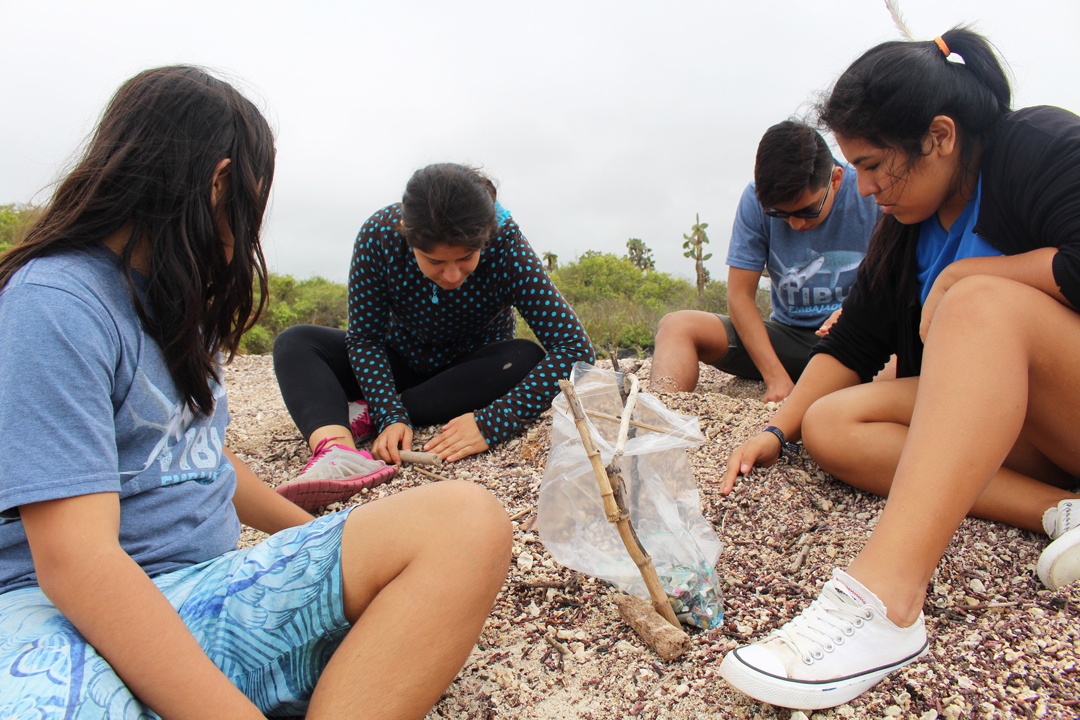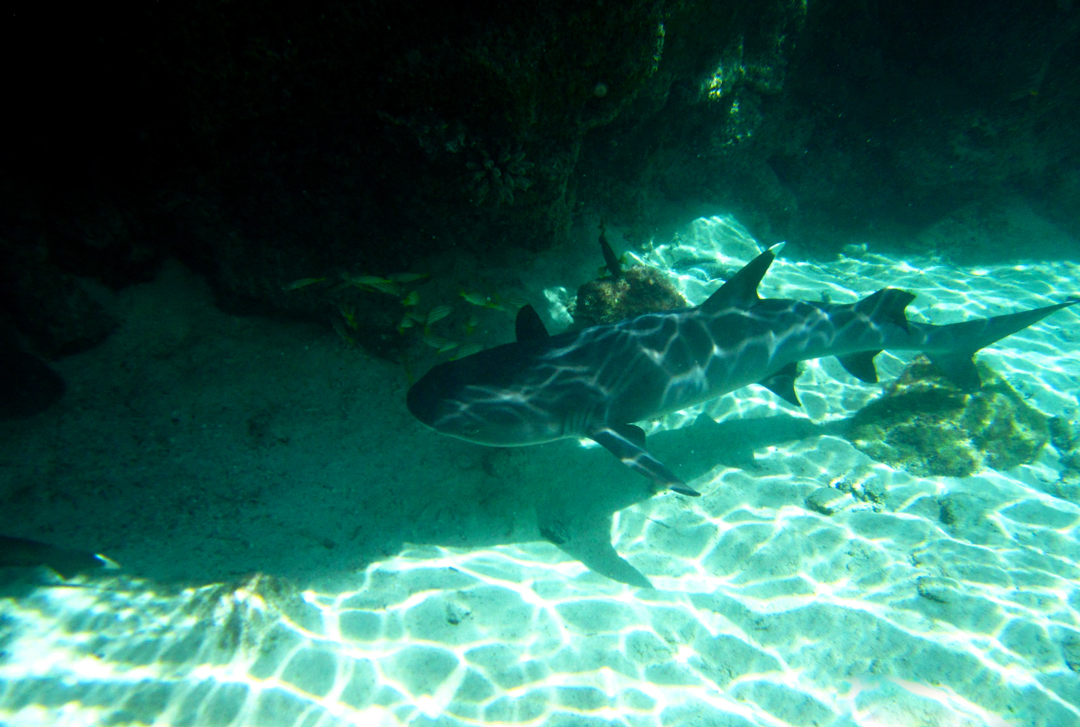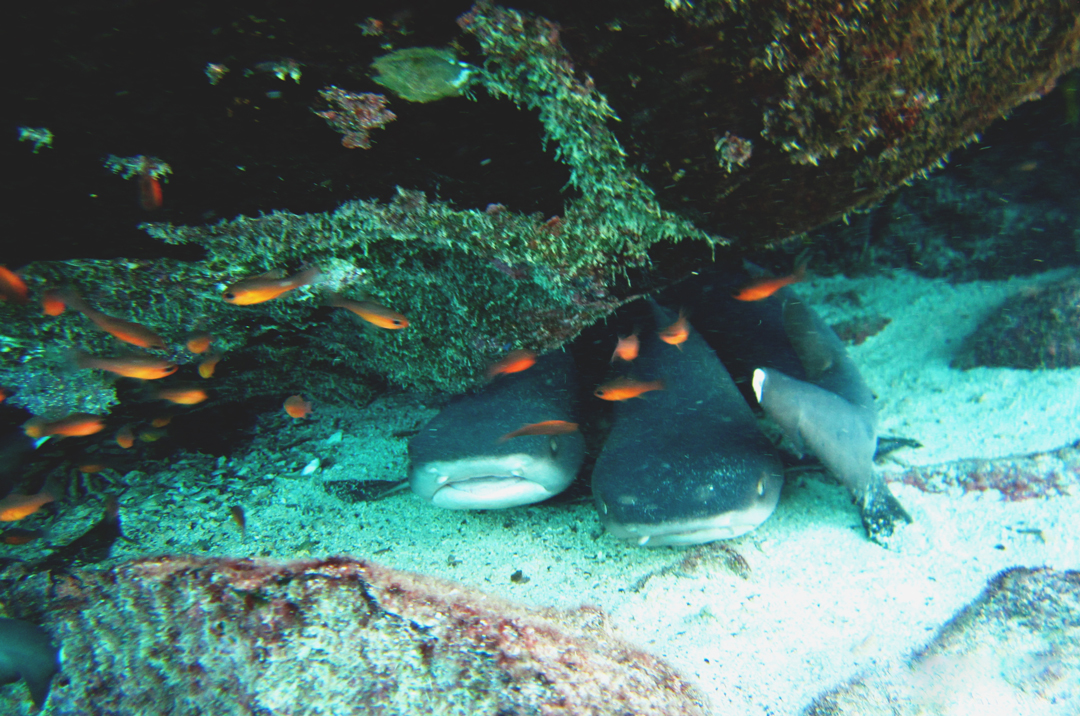Experience and fun – tools for learning about sharks in the Galápagos Islands
The first time we met our group of shark ambassadors for 2017, all the students were curious about the activities that would be part of the programme. I remember asking them why they chose this particular programme instead of another. Some admitted that they were afraid of sharks and some said that sharks are cool but they had never seen one, while others just wanted to learn more about sharks and the ocean. Different scientists attended our Saturday morning meetings, giving presentations on their particular field of expertise. The subsequent field activities complemented these talks and helped the students to understand better why we work to protect sharks and the oceans.

David Acuña, a shark expert from the Charles Darwin Foundation and a PhD student at Massey University, explains shark migrations, BRUVS and DOVS to the assembled shark ambassadors. Photo © Daniela Vilema
We prepared different activities, which included science lessons and storytelling. The ambassadors’ final project, an outreach project or exhibition for the local community, was key in that it gave them an opportunity to describe what they had learnt. We also participated in beach clean-ups that help the students to understand the impact of pollution in the oceans. In a single morning they picked up a huge amount of trash, including plastics of all kinds, nets, boxes and cables. Another beach clean-up focused just on microplastics: we sat on the beach and filled a bottle with tiny, colourful pieces of plastic that at first sight were easily confused with stones.

A microplastic beach clean-up at the Charles Darwin Research Station during the shark ambassadors’ camp. Photo © Daniela Vilema
After watching documentaries about overfishing, exploring rocky shores, identifying species while snorkelling and more, the shark ambassadors were ready for the activity they were looking forward to the most: snorkelling with sharks in their natural environment! We met at the Charles Darwin Research Station to go to the Itabaca Channel, where the boats La Iguana and Spondylus were waiting to take us to our adventure. We were all very excited on the way to Punta Carrión, a spot that is quiet but full of biodiversity. When we finally arrived, the water was so crystal-clear that we could see blacktip sharks swimming under the boat. The sharks were there!

Shark ambassadors prepare to enter the water to observe sharks at Punta Carrión. Photo © Daniel Unda
We jumped into the water and followed the naturalist guide who had joined us for the day. We could see whitetip sharks resting in caves, but we kept our distance and just enjoyed their beauty. While we were snorkelling we watched different species of reef fish feeding. They were so colourful, and the sunlight on them made them seem even brighter. When we returned to the boat after that first snorkel, the students were very excited!

A whitetip shark swimming close to our group at Punta Carrión. Photo © Florencia Cerutti
‘These programmes really help young people like us to get to know different species and what is reality rather than myth,’ said Katherine León, one of our shark ambassadors. While we were in the boat we had talked about the bad publicity sharks get, so the students were very surprised when this publicity was contradicted and they saw the other side of sharks. They experienced whitetip and blacktip sharks swimming very close to them and came to the conclusions that if we do as the experts say and respect the animal’s space, we can enjoy this amazing experience together.

Whitetips resting in caves at Punta Carrión while shark ambassadors were snorkelling. Photo © Florencia Cerutti.
José Antonio Santos, another of our shark ambassadors, commented how exciting it was for him to observe sharks in their natural environment for the first time. This successful experience demonstrated how important it is to get to know the place where we live to really understand the important role that people have to play in ensuring that sharks and other species are protected. We need more ambassadors in the world, and the best way to reach them is to show them the wonders of our planet. During our programme, exploring and learning with fun were successful tools in learning about conserving the ocean.
We would like to thank the Save Our Seas Foundation for supporting our project in the Galápagos Islands.
